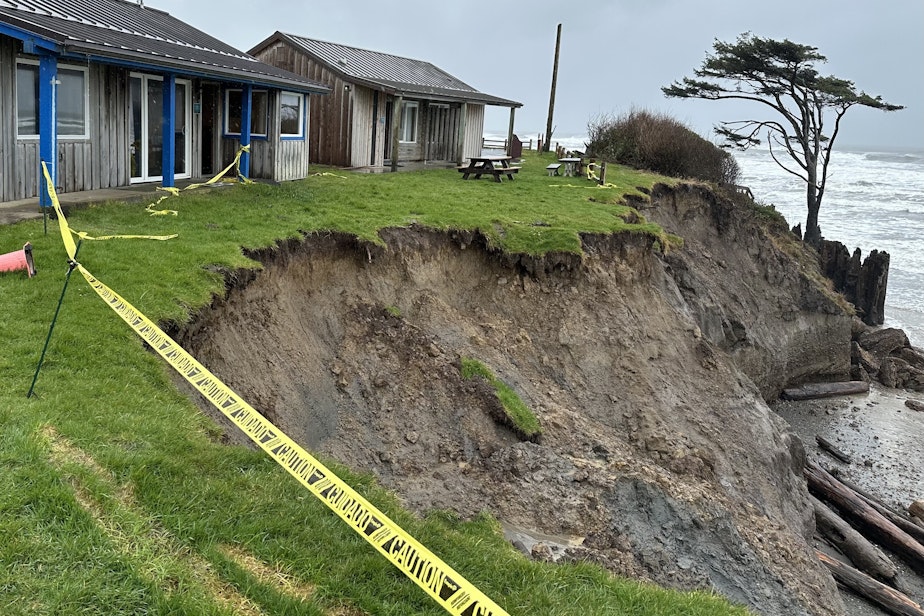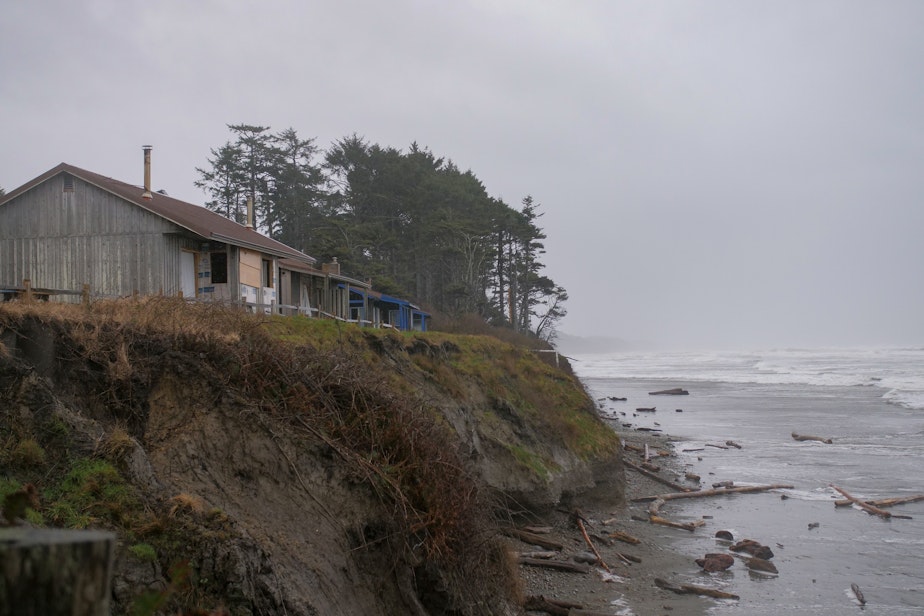Olympic National Park cabins demolished before they fall into Pacific Ocean

Construction crews started removing seven cabins from a crumbling bluff in the thin strip of Olympic National Park that hugs the Pacific Coast on Monday.
The vacation cabins in the park’s popular Kalaloch area, about 90 miles due west of Seattle, were getting close to falling into the ocean after a winter of intense storms.
“We need to take action and these cabins need to be removed because the bluff edge is close enough to those structures that they’re at risk of being damaged in one event,” said Olympic National Park spokesperson Molly Pittman.
Big storms in late December and January gnawed away about 13 feet of land in front of the cabins being removed. Those cabins have been closed to public use since Jan. 1.
“Heavy rain systems and freeze-thaw events amplified the erosion effect of the king tides,” Pittman said.
Layers of glacially deposited sand, gravel, and stone make the bluff especially vulnerable to erosion from wave action, according to park officials, especially when the sodden ground expands upon freezing, then weakens when it thaws.
Sponsored
King tides are the highest tides of the year. They allow ocean waves to reach farther ashore than at other times. Rising sea levels, fueled by global warming, can have a similar effect.

Bluff erosion is nothing new and is a natural process — an important source of sand and sediment for forming beaches.
Three cabins had to be removed from Kalaloch in the 1980s, according to a Washington Department of Ecology study.
“Those bluffs are constantly eroding,” said Ian Miller, a University of Washington oceanographer based in Port Angeles. “It just seems like they ramped up for some reason.”
Sponsored
The accelerating erosion over the past decade has been concentrated near the mouth of Kalaloch Creek.
“We have a sort of set of hypotheses for what may be driving that acceleration, but none have been rigorously examined,” Miller said.
Another 31 cabins at Kalaloch, along with a campground and the Kalaloch Lodge, weren’t affected.
“You can continue to go out to Kalaloch and enjoy that wonderful experience,” Pittman said.
Park officials encourage visitors to the Kalaloch area to use three “photo points” set up there, where smartphone users can line up photos and submit them to help scientists document the ever-changing state of the coast.
Sponsored





